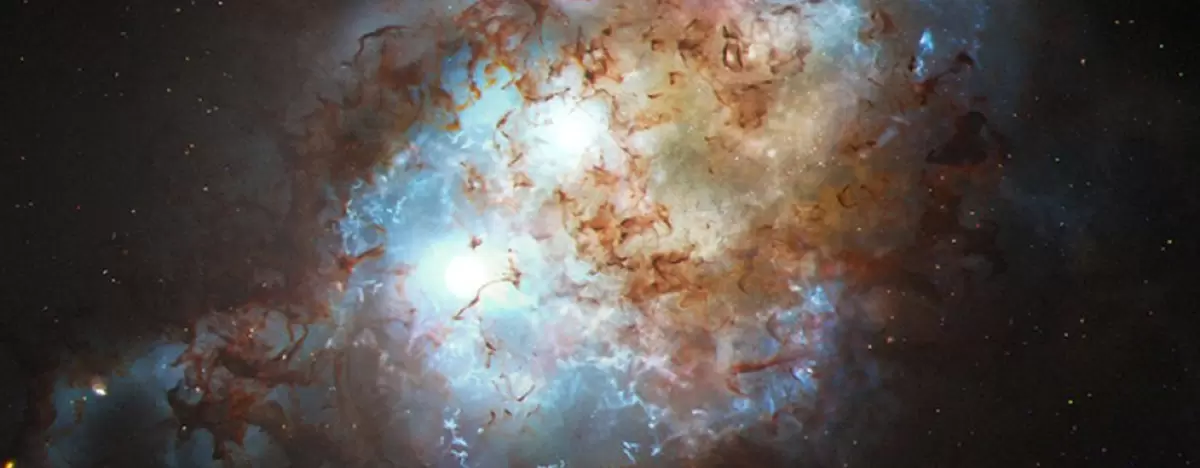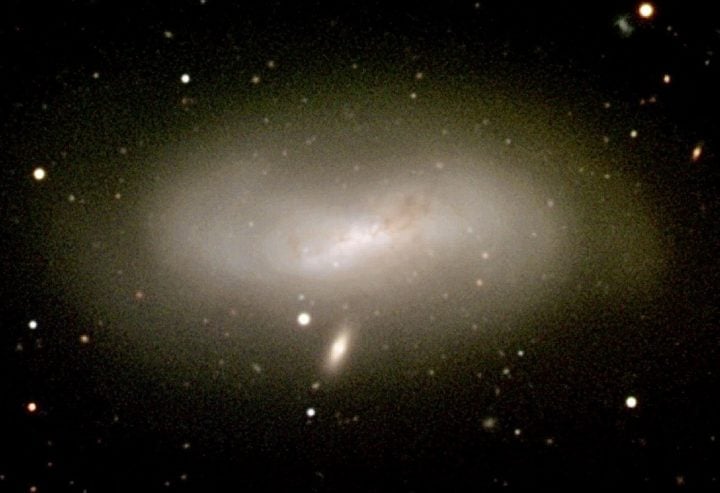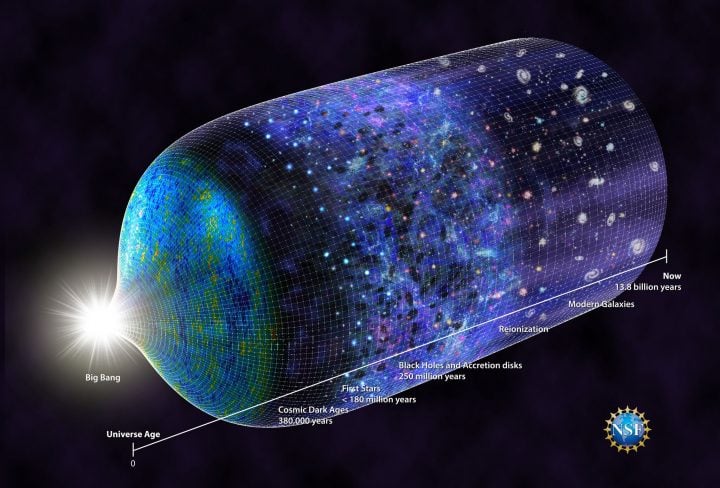Scientists have discovered a pair of gravitationally bound quasars inside two merging galaxies that existed when the universe was just 3 billion years old. An international group of researchers, including cosmologists at Carnegie Mellon University, reported the discovery in Nature.

This artist’s concept shows two quasars in the cores of two galaxies in the process of merging. Image credit: NASA, ESA, Joseph Olmsted (STScI)
Quasars are among the brightest objects in the universe and are created by invisible supermassive black holes, which live at the center of large galaxies. As black holes feed, they emit energy that heats up and illuminates the dust and gas they consume.
Only recently have researchers been able to see quasars in the early universe, thanks to the power of the current generation of telescopes like the Hubble. Double quasars have rarely been observed but are considered a telltale sign of a galaxy merger.
“Understanding how black holes form, the first quasars emerge, and how they grow along our cosmic histories is one of the greatest challenges of modern astrophysics,” said Tiziana Di Matteo at Carnegie Mellon.

The galaxy NGC 4424, known to display signs of activity from a past merger event. Image credit: WIYN Telescope, Juan R Cortes (ALMA).
“Quasars are small but play a fundamental role in how galaxies form and evolve into their present state. Observing early quasars, and in particular pairs of them, helps us understand how cosmic structures first form in our universe and the basic processes by which black holes grow.”
Scientists used computer models to understand how and where double quasars form in the universe. Because double quasars are so rare, with perhaps a few per million galaxies, a computer simulation needed to contain at least a million galaxies to attempt to capture a handful of double quasars.

Timeline of the universe. Image credit: N.R.Fuller, National Science Foundation
Di Matteo co-developed a galaxy formation simulation called Astrid, one of the largest cosmological simulations ever made. She was awarded a large resource allocation on the Texas Advanced Computing Center Frontera system supported by the U.S. National Science Foundation. TACC is the most powerful academic supercomputer in the U.S.
“Using TACC resources to store and analyze the petabytes of data produced by Astrid is allowing us to discover the origins of stars, galaxies and that dual quasars play an important role,” said Di Matteo.
Added Amy Walton, deputy director of NSF’s Office of Advanced Cyberinfrastructure, “NSF’s role in supporting the cyberinfrastructure that can catalyze such discoveries is critical for the science and engineering research communities. Complementary investments across different agencies foster our nation’s scientific ecosystem, and this is an excellent example of how investments from NSF and NASA together are enabling discoveries that are otherwise not possible.”
Source: NSF

